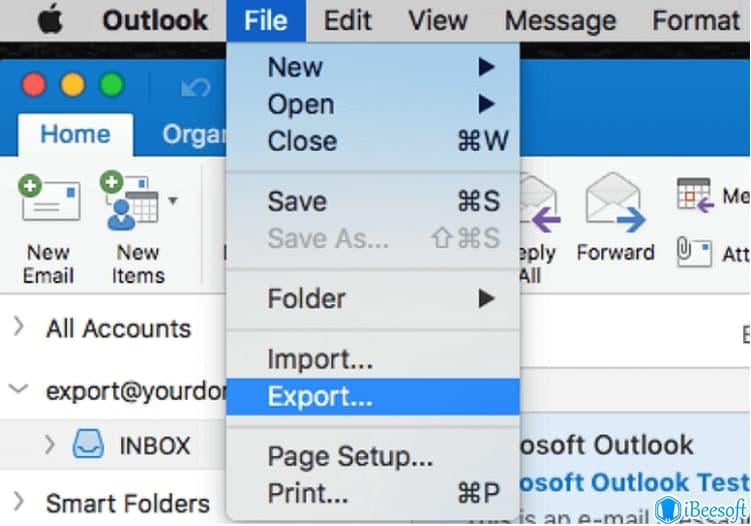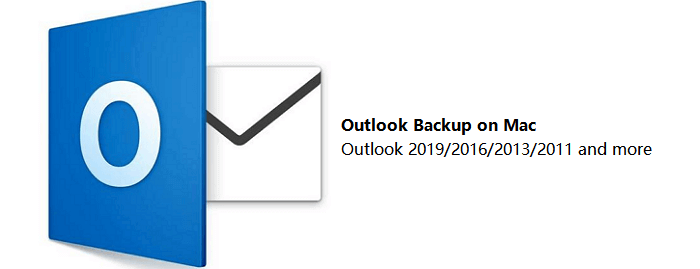

- USING TIME MACHINE TO BACKUP OUTLOOK 2016 ON MAC HOW TO
- USING TIME MACHINE TO BACKUP OUTLOOK 2016 ON MAC MAC OS
- USING TIME MACHINE TO BACKUP OUTLOOK 2016 ON MAC FULL
- USING TIME MACHINE TO BACKUP OUTLOOK 2016 ON MAC WINDOWS 10
- USING TIME MACHINE TO BACKUP OUTLOOK 2016 ON MAC PC
Enter that correctly and you can proceed by again clicking on the “Connect” button. It’s a little weird, but since it’s connected directly, you don’t need to enter a “name”, just the password. I restarted and this time when I got to the same prompt, I made the same choice, but had already hooked my Mac up to the Time Capsule via a direct Ethernet wire.Īnd it’ll be time to click on “Continue” to proceed: Bad mistake since I was going to be restoring hundreds of gigabytes of data (iTunes libraries, Document archives, etc). I chose “from a Time Machine backup” and then made the mistake of connecting to the unit via my wireless network. So when I got my new MacBook Pro, I got the first chance to test out restoring from Time Machine… Having said that, I don’t really like the fancy “time tunnel” interface to get to Time Machine backups, especially from a computer other than the one you’ve backed up, but fortunately there are now third-party alternative apps that make this quite a bit easier to do: go to and search for “time machine” to see what I mean. It’s a winner in my book and I have had to restore files from it more than once. But if you have no other choice, it works for our Time Machine purposes.I’ve been holding on to this question for a while now, waiting for a new computer of my own because I too have a Time Capsule and have been using Time Machine for quite a while now to have reliable and invisible backups of my different Mac systems. Yes, this is far and away from Apple's simple "just works" ideology. You should now see that Time Machine has a backup location, and Select Disk shows the proper name of the sparsebundle. Now we need to check that Time Machine sees the Disk and is ready to use it for backups.
USING TIME MACHINE TO BACKUP OUTLOOK 2016 ON MAC WINDOWS 10
Make Time Machine use the remote share and fileįinally, we're ready to make Time Machine see and use the Windows 10 share housing our sparsebundle file.

You may need to unmount the share before this can take effect, but as of this moment, that share will automatically mount every time you reboot and log in.

This will take a while, especially if you set a large file size.
USING TIME MACHINE TO BACKUP OUTLOOK 2016 ON MAC MAC OS
USING TIME MACHINE TO BACKUP OUTLOOK 2016 ON MAC FULL
If you want to be able to at the very least backup the entire contents of a full hard drive, select a size at least equal to your Macintosh HD drive size. We now need to create an "image" file that will, in essence, pretend to be an APFS filesystem for your Mac for backup. You should also see that share in Finder in your "Shared" section and see the "Eject" icon next to it since it is now mounted. Make sure to save those credentials to your keychain for the OS to automatically use those credentials for connecting to the share for future access. If you've correctly set everything up, you'll be prompted to enter a registered user and password.
USING TIME MACHINE TO BACKUP OUTLOOK 2016 ON MAC PC
For example, if you have a Windows PC named "Server" and a network shared folder on the Windows PC named "share," you'd be able to test for connectivity by doing the following:Įnter smb://Server/Share where "server" is the name of the Windows PC and "share" is the name of the shared folder.

USING TIME MACHINE TO BACKUP OUTLOOK 2016 ON MAC HOW TO
I won't go into detail on how to create a shared folder on a Windows PC, but before you begin, you'll need to have a shared folder created and accessible to your Mac that you want to run Time Machine on. It's optimized for solid-state drives (SSDs) and other all-flash storage devices, but it also works on mechanical and hybrid drives. The issue that makes Time Machine more complicated in terms of options for backup locations is that it requires the use of the Apple File System (APFS), which first launched with macOS High Sierra.


 0 kommentar(er)
0 kommentar(er)
